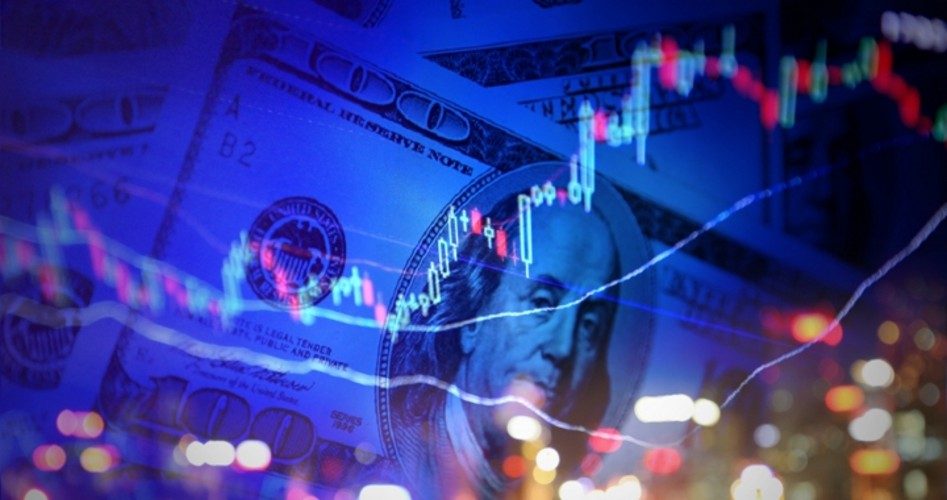
While Washington is focused on the impeachment proceedings, consumers are either online or at the mall doing their Christmas shopping. That’s almost all one needs to know about Donald Trump’s reelection chances next November. As the anti-Trump Washington Post painfully admitted, “Voters tend to base their vote on how the economy performed in the year leading up to the election.”
For the Post in particular, and for anti-Trump Democrats in general, it gets worse. The Post reluctantly admitted that “Since World War II, no U.S. president has lost reelection when the unemployment rate was below 7.4 percent.”
Under Trump, the unemployment rate is less than half that, at 3.5 percent.
When the president looked at reelection forecasting models in late October, he was pleased that three of the most reliable models showed him winning easily next November.
The numbers on the economy have done nothing but get better since then.
Tariffs:
Larry Kudlow told the Washington Post on Sunday, “Tariffs will be much more stable for quite a while.” Thanks to the perception that Phase One is a done deal, with Trump backing off from raising tariffs in exchange for Chinese acquiescence, it’s one less thing to worry about for business owners importing goods from China.
White House officials say that the trade deals alone “could push growth up half a percentage point” in 2020. This would partly be driven by China’s promise to increase substantially the purchase of U.S. agricultural products.
Wages:
The average American worker’s take-home pay is growing at more than three percent a year, a level not since before the Great Recession.
Consumer and Business Confidence:
Both have surged since Trump’s election in 2016 and remain at record highs. As Clifford Young, president of public affairs at the global market research company Ipsos, said on Wednesday, “American consumer confidence is pretty strong and at very high levels. The fundamentals are just solid here. You look around and things are going well.”
SNAP (Food Stamps):
The number of Americans on SNAP has dropped by an estimated four million, reflecting a strong job market offering better opportunities than staying at home and collecting a few hundred dollars a month under the government welfare program.
The Fed:
Chairman Powell has promised not to raise interest rates in 2020, a position buttressed by two prominent members of the Fed. Chicago Fed president Charles Evans told the Economic Club of Indiana on Wednesday, “I think the economy is doing remarkably well. We are looking for the economy to continue to grow … labor markets continue to be strong.”
New York Fed president John Williams told CNBC on Wednesday, “I feel very good about how the economy’s been this year, how it’s progressed and [I] feel very good about how it’s going to look next year.”
Unemployment:
The unemployment rate is at historically low levels and likely to remain so into 2020, according to forecasters (whose record in predicting the future has repeatedly understated reality).
Job Growth:
November’s 266,000 new jobs reflected an economy stronger than many forecasters predicted. The report also reported significantly upward adjustments of the previous two months’ reports.
The Economic Recovery:
The recovery from the Great Recession is now the longest in history, well into its 11th year.
Wall Street:
The major averages (Dow, S&P 500, Nasdaq) are up 25 percent for the year, portending a strong economy for at least the next six months.
The Global Economy:
An estimated 90 percent of the world’s economies are flat or in recession. The good news is that there are now measurable signs of recovery on the horizon, boding well for increased demand for U.S. goods next year.
Further Tax Cuts:
Tax Cuts 2.0 are on the White House agenda, according to Trump’s chief economist Larry Kudlow. The president, he said on Wednesday, won’t publish anything “until we’re well into the campaign later next year.”
Housing:
Mortgage interest rates fell to three-year lows in the third quarter of 2019, driving optimism in the Housing Market Index (HMI) published by the National Association of Home Builders (NAHB). The HMI just clocked its highest reading in 20 years.
Home purchases and refinancings have picked up since the summer, and housing starts and building permits for November exceeded expectations.
Ken Simonson, chief economist at Associated General Contractors of America, just predicted a “burst of home construction” next year, noting that contractors are currently “very busy” and “upbeat” about the future.
Recession Worries:
A well-known indicator of recession, an inversion of the yield curve, appeared briefly in August, driving the Dow down by 800 points on August 14, its sharpest drop of the year. Since then, that indicator has reversed massively, moving the chances of a recession next year to its lowest level since June. Since then the Dow has rebounded nicely, setting record highs along the way.
As Susan Crabtree, a senior White House correspondent for Real Clear Politics, just noted, “The roaring economy has defied repeated headlines that it’s losing steam. [Instead], it’s providing a political tailwind that, if sustained, has the power to carry Trump past the current mess and into the 2020 election season with an unimpeachable record of success on one of the most important issues to voters.”
Image: honglouwawa via iStock / Getty Images Plus
An Ivy League graduate and former investment advisor, Bob is a regular contributor to The New American, writing primarily on economics and politics. He can be reached at [email protected].
Related article:
Economists Forecast GDP Growth Under Two Percent; Walmart Shoppers Disagree



